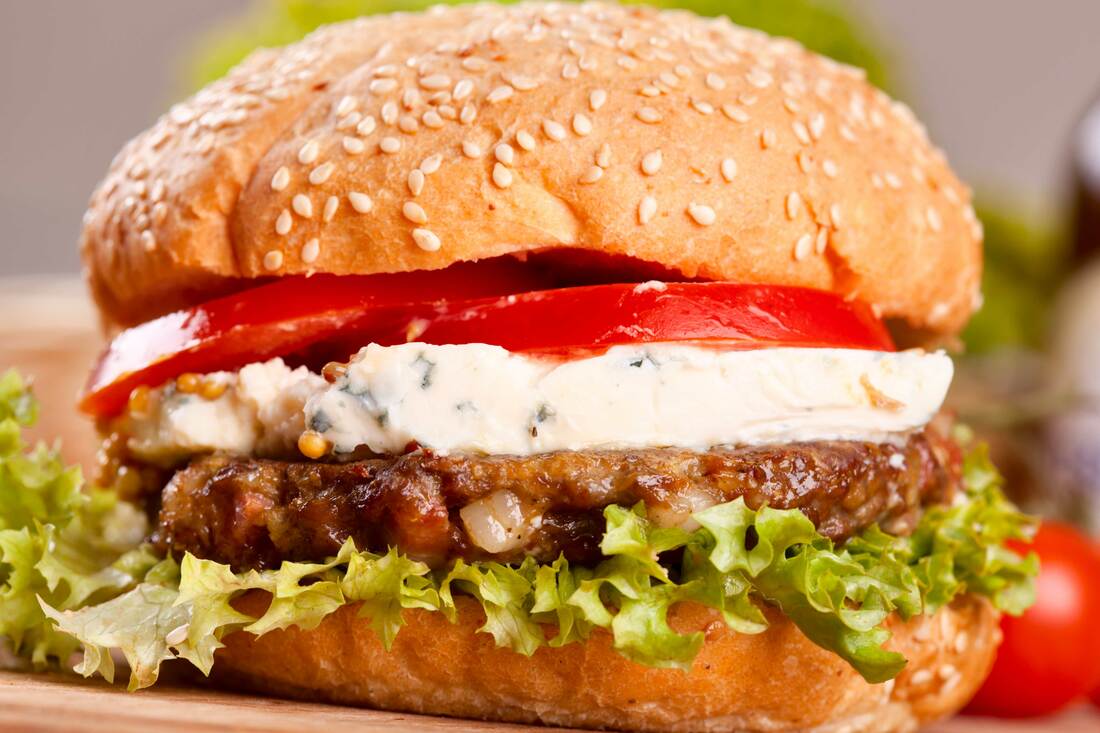 Burgers are a blank canvas – and ripe for splashy presentations that make for eye-catching, mouth-watering photos. If your burger selection needs an injection of creativity, the potential combinations are endless. Change up the protein. While eggs may still be impractical, you can still stack a burger high with a mix of proteins or experiment with bread of different textures. Upgrade it with bacon or incorporate its smoky flavor into a jam. Try a new cheese, top with pickled or fermented vegetables, or offer a different take on classic onion flavor by preparing onions in a different way. A sweet or savory aioli can also offer greater variety without a lot of labor – search the US Foods website for a wide range of variations that can help elevate the flavor of your burgers.  What’s better comfort food than a burger? When your burger menu offers the right combination of options, it can be a go-to section of your menu for vegetarian and carnivore alike. A kitchen can create a wide range of burger experiences with subtle alterations in toppings, condiments, rolls or presentations, making burgers an inventory-wise menu option too. Consider how you can get creative with classic burgers, incorporate global flavors or even invent a new burger variety on your menu with a surprising combination of tastes and textures. As consumers’ busy lifestyles blur the boundaries between day parts, your menu of snacks and small plates can make you a favorite spot for a quick bite. Sliders are always a win on the menu – they’re eye-catching, shareable (if table mates are feeling generous) and can satisfy a burger craving while providing just enough food to take the edge off. Chefs can get creative with sliders too – use them to test out new condiments, toppings and sides or to experiment with some Instagrammable presentations.
Clamoring to sell a plant-based burger than can pass for meat? There may be good reason to be a late adopter. Amid the rise in demand for plant-based proteins, a number of industry experts have questioned the more processed options available. (Case in point: The Impossible Burger has been criticized for its inclusion of the ingredient heme, which Food Dive describes as an iron-containing molecule made by fermenting genetically modified yeast.) Further, an article published recently in the Journal of the American Medical Association by doctors, nutritionists and public health specialists advised that further research was needed to determine if plant-based meat alternatives designed to mimic the real thing were in fact as healthy and beneficial to the environment as they claim to be.
What will your menu look like in 20 years? If new research from the global consulting firm AT Kearney is on target, there will be significantly less meat on it. The study predicts that by 2040, 60 percent of meat will not come from slaughtered animals but will instead be grown in labs or derived from plant-based products that look and taste like meat. We’re already well on our way. On the Spoon’s recent list of the 25 companies creating the future of food, six of the companies represented are involved in developing some kind of alternative to conventional meat. The companies run the gamut, ranging from startup companies making cultured protein (like Shiok Meats – watch for it to crack open the cell-based protein market in Asia) to more traditional protein brands like Tyson. Even though Tyson is the largest meat producer in the U.S., the Spoon reports, it has invested in cell-based protein companies and Bloomberg reports that it will soon be launching a beef-and-plant hybrid burger consisting of half pea protein and half angus beef.
As Beyond Meat and the Impossible Burger compete for market share and fast-casual and quick-service brands scramble to bring meat substitutes to their menus, don’t forget some other plant-based meat alternatives that may suit your menu well. In a recent Upserve survey of 9,000 restaurant operators, jackfruit had climbed 52 percent on menus in the past year. Unripe jackfruit has a taste and texture that mimic meat and can work well as a pork or chicken substitute. It is also nutrient-rich, containing calcium, iron and potassium, and because it is a natural plant-based protein, it may appeal to guests looking to consume more whole foods.
Barbecue season is upon us and with it comes rising consumer interest in burgers. It’s a good time to tune up your menu with some on-trend ingredients and approaches. A recent Forbes report advised new burger franchisors to offer more sophisticated options for consumers craving new tastes. For example, Restaurant Burger Magazine said that while cheddar is a longtime favorite as a burger topper, consumers are demanding more variety. Consider mozzarella, Muenster or goat cheese, or try offering a series of limited time offerings that allow you to switch up your cheese, condiments and buns with regional or globally influenced options.
At a time when consumers are becoming more vigilant about the use of antibiotics in the meat they consume, industry watchdogs are ready to call out businesses that aren’t sufficiently vetting their suppliers. In a newly released report card that rates 25 burger chains for the degree of antibiotic use in their meat sources, all but three businesses received failing grades (and one of those three received a D-minus). Restaurant Business reports that the Chain Reaction report, which was authored by the U.S. Public Interest Group and co-authored by Consumers Union, the National Resources Defense Council and other public interest groups, found that most chains lack meaningful policies on antibiotic use in their beef supply chains. Shake Shack and Burger Fi came out on top, scoring A’s for sourcing beef without antibiotics. If guests asked you about your beef supply chain, what would you say?
|
Subscribe to our newsletterArchives
April 2024
Categories
All
|










 RSS Feed
RSS Feed